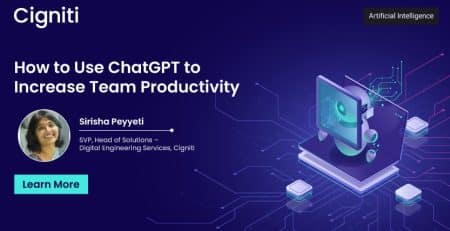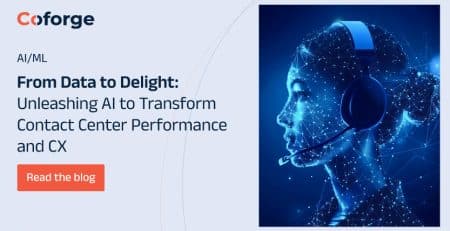How to Define Data Thinking for Business Users
The digital shift has become the most important aspect of the success and survival of most businesses in recent years. The digital shift must become a top priority and focus for the leadership.
Data Thinking fills the gap between business units in the enterprise and IT that keeps the lights on as well as caters to innovation. The key to digital development coming together is the intricate interplay between all of these areas. Individual data efforts’ long-term success is based on it.
Knowledge is power, and data creates knowledge. Data science and design thinking are combined to create data thinking. Data in itself doesn’t make a lot of sense unless you ponder on it and derive insights leveraging data thinking. But what does it actually mean?
How to become a data-driven company with data thinking?
Over the past decade, all enterprises have been focusing on being data-driven. Data and data platforms have evolved over time and organizations have geared up to use data as a differentiator. So, what do these data and insights requirements within an organization look like?
Visibility into what a specific business or a business unit is doing and how they are performing based on different set KPIs is the descriptive part. Whereas, how is past performance and data going to influence the future is the predictive part.
I have some hypotheses; I have some ideas, but what is the data telling me? How else and what else should I be doing? This is a more interrogative style.
What should I be doing to ensure that there are minimum interruptions in my factory line – what temperature, torque, and pressure should each machine operate at? This is the typical prescriptive style.
From a technology landscape, each of the questions needs to be dealt with differently. For some of these questions, there could be other possibilities like an aggregation of these insights at an overall organizational level and their alignment with the business goals.
How to prioritize data needs?
Many enterprises delegate data and insights requirements to IT departments. That’s where the disconnect starts and the data projects drag on for years and also don’t meet all business requirements.
Hence the need to focus on how and who should initiate the value chain for creating data requirements and how to prioritize those requirements.
One of the most important aspects of leveraging the power of data is crafting clear requirements or use cases. While different methodologies already exist like the standard Business Requirements Document (BRD), Cross Industry Standard Process for Data Mining (CRISP-DM), and Team Data Science Process.
These methodologies focus either on the overall framework of the execution of the data mining process like CRISP-DM or are very traditional and lengthy in nature like the BRD which makes it counter-intuitive for business users to start this process.
Zhamak Dehghani from Thoughtworks made a case for an architecture pattern called ‘Data Mesh’ which again emphasizes the need for data product thinking and is more of an architecture rather than a business tool.
Data thinking for business users
So, is there a way to simplify the process and start at the beginning – the core aspect of the data journey i.e.; defining the requirements for data and insights by business users?
Let us consider a two-step approach to understand this and for the sake of articulating the process. We considered a group of clinics that has patient footfall for Primary Healthcare Conditions (PHCs).
1. Create the ‘data idea’
A high-level representation of what the business user intends to do with the data is expressed as a requirement. Let us do that as a question:
- How many patients are coming into the clinic on average in a day?
- What are the top three PHC conditions that patients are suffering from?
- How is clinic A faring when compared to clinic B in terms of patient footfall?
2. Build the ‘data story’
At this stage, the idea can be expanded a bit more and take the shape of a user story. The intention here is to add a bit more meat to the bones and explain the intention in a much clear manner. Taking a cue from the previous examples, this is how they would get transformed:
- As an operations manager, I would like to understand the average number of patients at the clinic in a given {day}/{week}/{time of the day} so that
- As an executive administrator, I would like to understand the average number of patients across all clinics in a given {day}/{week}/{time of the day} so that
- As an executive administrator, I would like to understand how {Clinic A} compares to {Clinic B} or {overall clinics} in terms of the average footfall of patients in a day so that
As you can see, at this stage, there are more details. But more importantly, all the good features of user stories can be leveraged – group requirements, define success criteria, identify the persona, and map it to a business need.
Another important characteristic at this stage is to create multiple user stories for each user persona. That way testing the user story as well as the need for building such a metric is evident to the technology team.
Post this, it would make sense for the business team to evaluate the priority of each of these ideas and user stories. Customized versions of Gartner’s Risk Opportunity Appetite Return (ROAR) framework can be used for this.
This helps business funnel their data thinking across different groups better. This prioritized list is what the technology team can start working with, maybe create a data model canvas (as an initial design guideline) and build the pipelines, reports, machine learning (ML) models, etc to meet the requirement.
This is an initial attempt to understand and synthesize the idea around how to get business users to start thinking and talking data. The intention is to borrow from existing practices like design thinking, user stories, and decision-making to initiate conversation in this aspect.
Concluding lines
Having data is one thing; using it to its fullest is another. Nothing is gained by having the first without the second. The data thinking approach will probably help businesses make sense of how they intend to convey their intent of using data.
Every business has unique needs and goals, and each business must embark on its own path and data thinking would make that journey a little easier.
Your organization will become data-driven and realize untapped data potential with the help of data thinking. This approach is frequently used in our projects at Cigniti. Data thinking may, of course, be applied to a whole business, but it is frequently employed in the context of a particular department or even a single process, such as a sales process or a customer journey on a website.
Visit Cigniti Data & Insights to talk to our data and insights experts and understand how data thinking can help your organization.





Leave a Reply